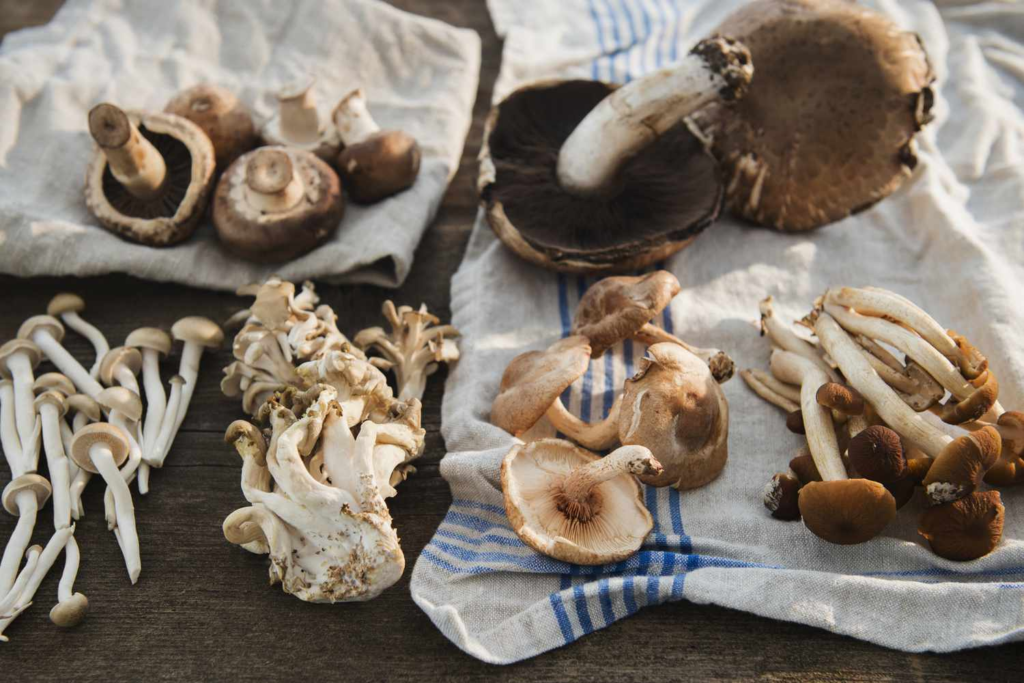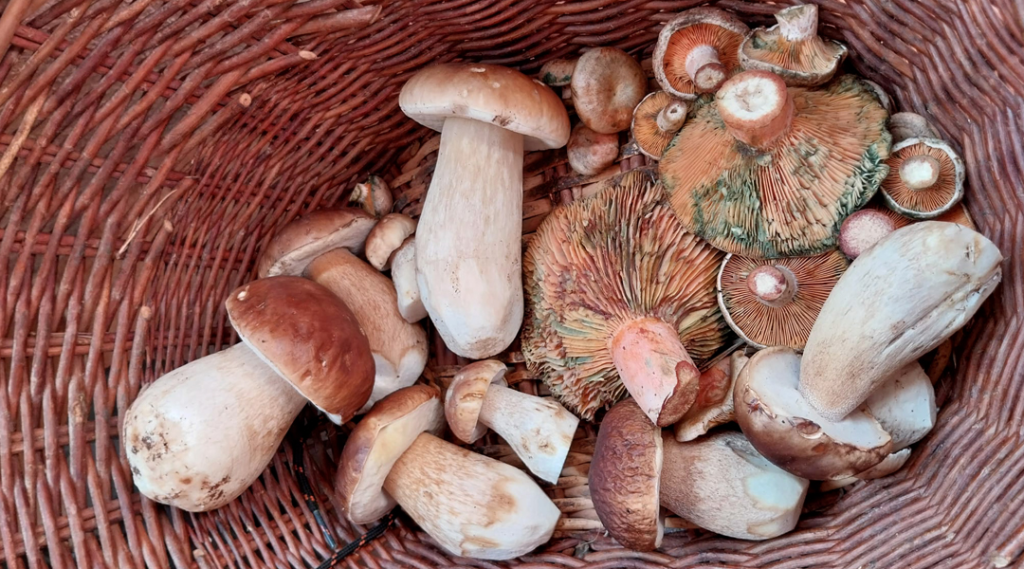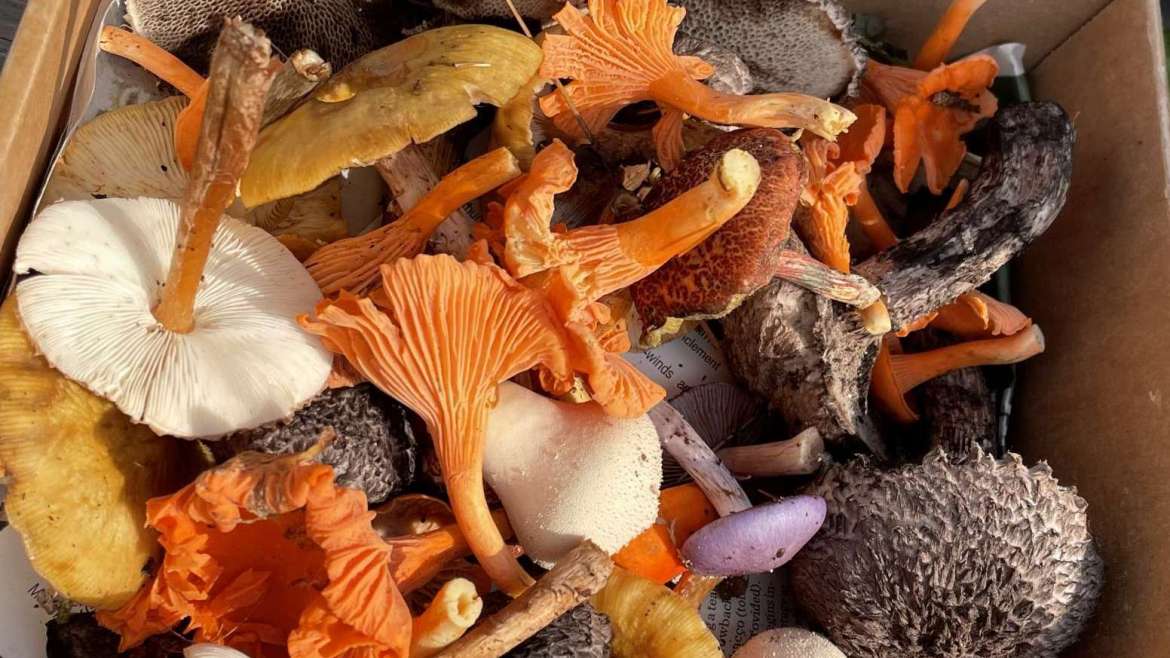By Barbara Pleasant | 8 August 2024
In temperate regions, late summer and autumn mark the peak season for wild mushrooms. From delicate chanterelles to robust boletes, forests come alive with a variety of fungi, offering edible treasures and fascinating natural wonders.
Mushrooms are the fruiting bodies of fungi, which thrive in decaying wood and organic matter. Their gills release microscopic spores, enabling the fungi to form new colonies. Many species live symbiotically with trees, with vast underground networks that may even serve as the forest’s communication system. These fungi play a critical role in the decomposition process, often emerging in hardwood mulch, rotting stumps, or even potting soil.
4 Key Tips for Identifying Wild Mushrooms
While not all wild mushrooms are edible, they’re all captivating in their unique forms. For successful identification, focus on these four essential field marks:

- Habitat
Note where the mushroom is growing. Is it near pine or hardwood trees? On a decaying stump, or scattered across open ground? - Physical Characteristics
Take clear photos of the entire mushroom, including the base, stem, and cap. Examine the gills underneath and observe how they connect to the stem. - Smell
Slice the cap from the stem and smell the flesh. Some mushrooms have distinctive odors that aid in identification, while others are neutral. - Spore Print
Place the mushroom cap, gill-side down, on paper or a glass plate, and leave it overnight. The resulting spore print—ranging in color from white to yellow to black—is a critical identification tool. A magnifying glass can also help you closely inspect gill patterns and attachment points.
Even with these steps, mushroom identification is challenging. Key details, such as stem texture or flesh odor, can be easy to overlook. Yet, solving these “mushroom mysteries” is a rewarding pursuit for nature enthusiasts.
Safety Tips for Mushroom Foraging
For novice foragers, it’s tempting to assume every mushroom is edible—this is not the case. Familiarize yourself with local edible varieties and their toxic look-alikes. Start by consulting a field guide tailored to your area and bookmarking reliable online resources like Wild Food UK or state-specific guides in the US. Joining a local mushroom club or foraging group is also a great way to learn.
Experienced foragers often revisit the same spots where prized mushrooms grow year after year. However, fungi can be unpredictable, sometimes skipping seasons or relocating to nearby areas.

Always practice ethical foraging:
- Harvest mushrooms only if you plan to eat them.
- Collect no more than one-third of a cluster to allow the fungi to complete their life cycle.
- Seek permission before foraging on private land.
Cleaning and Cooking Wild Mushrooms
Wild mushrooms often host slugs, ants, and other tiny creatures, and they grow in decaying wood where soil and debris accumulate. To clean them:
- Trim away the dirtiest parts.
- Use a soft brush to remove loose dirt.
- Rinse briefly under cool water and pat dry.
Cooking is essential for all wild mushrooms. To prepare:
- Slice cleaned mushrooms and cook them in a dry pan over medium-low heat for about 12 minutes until they release their juices.
- Add butter or oil near the end of cooking to enhance flavor and retain moisture.
Cooked mushrooms can be frozen for future use, allowing you to savor your foraged finds long after the season ends.
Wild mushroom foraging is both an adventure and an education, connecting you to nature’s intricate ecosystems. With patience and care, you can enjoy the rewards of this fascinating and delicious hobby.
